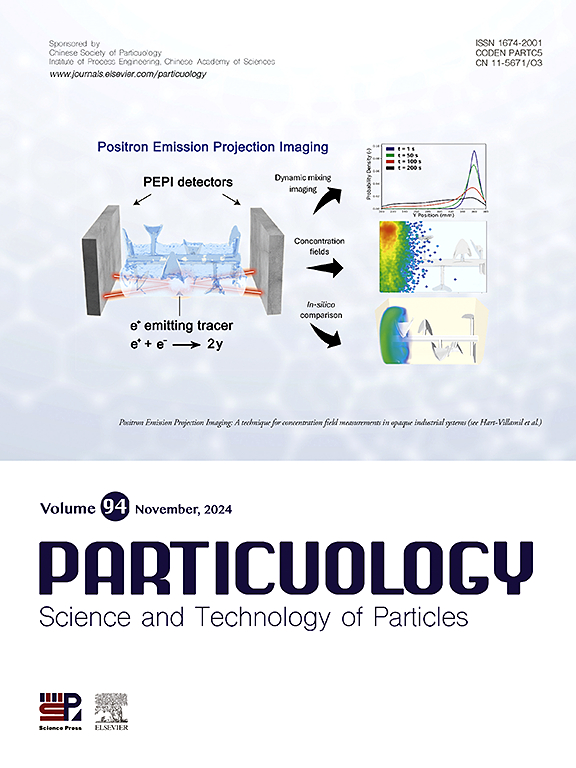Hydrodynamics of fluidized bed flotation column: Experimental and statistical analysis
IF 4.1
2区 材料科学
Q2 ENGINEERING, CHEMICAL
引用次数: 0
Abstract
The hydrodynamic characteristics in fluidized bed flotation column (FBFC) are critical for optimizing fluidized flotation processes, yet understanding the interactions between operating parameters remains a complex challenge. This study proposes a novel method to classify flow regimes and identify transition velocities in fluidized bed flotation columns. By analyzing gas-solid holdup variations () via electrical resistance tomography (ERT), we identified three distinct flow regimes and two transition velocities using -based criteria. Furthermore, we employed pressure transducer and ERT to analyze how gas velocity (Ug), water velocity (Uw), and particle size (Dp) influence pressure fluctuations, minimum liquid fluidization velocity (Umf), and gas and solid hold-ups distributions. Results showed that Uw and Dp significantly influenced pressure fluctuations, while Ug affected pressure fluctuations mainly for large particles. Umf increased with Dp but remained unaffected by Ug. Higher Uw and Dp led to more uniform distributions of radial gas and solid hold-ups, with Ug influencing distribution only in the fixed bed regime. Finally, the using Box-Behnken design (BBD) and analysis of variance (ANOVA), significant interactions between Ug and Dp for the average differential pressure, and between Uw and Dp for were identified, with no significant interactions for normalized standard deviation of differential pressure fluctuation. Predictive models with high correlation coefficients were established for these interactions, offering guidance for FBFC optimization.

求助全文
约1分钟内获得全文
求助全文
来源期刊

Particuology
工程技术-材料科学:综合
CiteScore
6.70
自引率
2.90%
发文量
1730
审稿时长
32 days
期刊介绍:
The word ‘particuology’ was coined to parallel the discipline for the science and technology of particles.
Particuology is an interdisciplinary journal that publishes frontier research articles and critical reviews on the discovery, formulation and engineering of particulate materials, processes and systems. It especially welcomes contributions utilising advanced theoretical, modelling and measurement methods to enable the discovery and creation of new particulate materials, and the manufacturing of functional particulate-based products, such as sensors.
Papers are handled by Thematic Editors who oversee contributions from specific subject fields. These fields are classified into: Particle Synthesis and Modification; Particle Characterization and Measurement; Granular Systems and Bulk Solids Technology; Fluidization and Particle-Fluid Systems; Aerosols; and Applications of Particle Technology.
Key topics concerning the creation and processing of particulates include:
-Modelling and simulation of particle formation, collective behaviour of particles and systems for particle production over a broad spectrum of length scales
-Mining of experimental data for particle synthesis and surface properties to facilitate the creation of new materials and processes
-Particle design and preparation including controlled response and sensing functionalities in formation, delivery systems and biological systems, etc.
-Experimental and computational methods for visualization and analysis of particulate system.
These topics are broadly relevant to the production of materials, pharmaceuticals and food, and to the conversion of energy resources to fuels and protection of the environment.
 求助内容:
求助内容: 应助结果提醒方式:
应助结果提醒方式:


